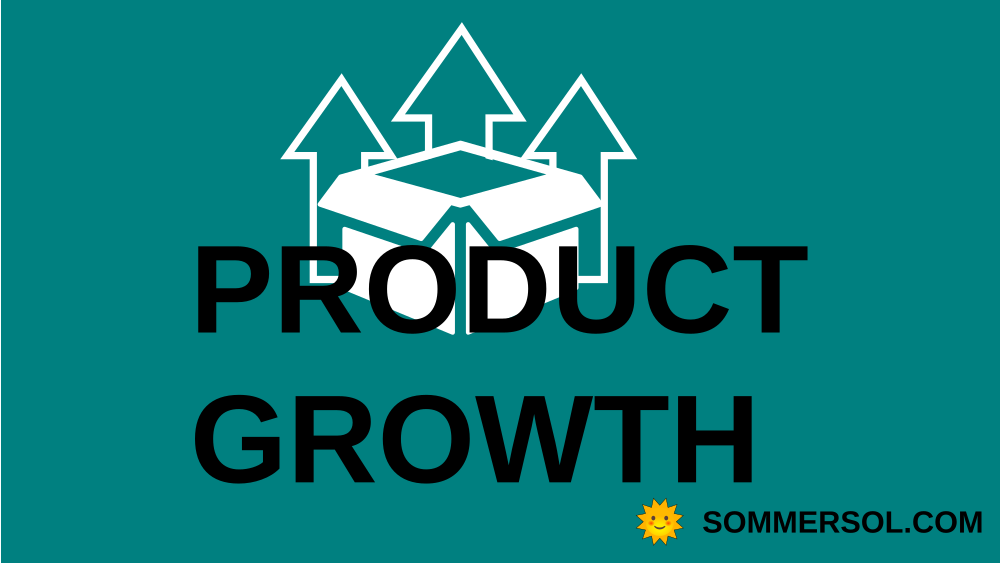
Product Growth: Why it's Important and How to Achieve It
04.11.2023
Imagine you're a company owner that just launched your new product, but you're struggling to get traction. You're not sure how to attract new users or convert them into paying customers.
This is a common challenge for many companies. But it's one that can be overcome with a well-designed product growth strategy.
What is Product led growth?
Product led growth, or product led growth strategy focuses on using the product itself to acquire, engage, and retain customers. It's a holistic approach to growth that considers the entire customer journey, from awareness to advocacy. It creates company-wide alignment across teams—from engineering to sales and marketing—around the product source of sustainable, scalable business growth.
Product growth is important because it allows businesses to achieve sustainable growth without relying on external factors such as paid advertising. When done well, product focused growth can lead to lower customer acquisition costs, higher customer lifetime value, and stronger brand loyalty.
Product growth strategies
There are many different product growth strategies that businesses can use to grow their product. In a Product led growth strategy, the product is the primary driver of growth, rather than sales or marketing efforts.
Product-led growth strategies are typically based on the following principles:
- Free trials or freemium plans: This allows users to try the product before they buy it, which can help to reduce friction and increase conversions.
- In-app guidance and education: The product should provide users with in-app guidance and education to help them learn how to use the product and get the most out of it. This helps to activate users and encourage them to adopt the product more deeply.
- In-app purchases: This allows businesses to monetize their products without having to charge users a subscription fee.
- Viral marketing: This involves designing the product so that users are encouraged to share it with their friends and colleagues.
- Content marketing: This involves creating and distributing valuable content that attracts and engages potential customers.
- Community building: This involves building and nurturing a community of users around the product.
Product Led Growth Companies
Product-led growth companies are companies that is disrupting the traditional go-to-market approach. Instead of relying on sales and marketing teams to acquire and retain customers, these companies focus on building products that are so easy to use and valuable that customers sell themselves.
Companies that focus on Product Growth typically have a few key things in common:
- They offer a freemium or free trial plan, so users can try the product before they buy it.
- Their products are self-service, so users can start using them without having to talk to a salesperson or customer support representative.
- They have a strong focus on user onboarding and education, to help users learn how to use the product and get the most out of it.
- Their products have viral loops, which encourage users to share them with others.
Some of the most known and successful companies that focus on Product Growth include Slack, Dropbox, Zoom, and HubSpot. These companies have all grown rapidly by focusing on building products that customers love and that sell themselves.
Companies that focus on product growth have a number of advantages over traditional companies. First, product led growth companies have lower customer acquisition costs, because they don't have to spend as much money on sales and marketing. Second, these companies have higher customer retention rates, because customers are more likely to stick with a product that they've already invested time and effort in learning how to use. Third, they can scale their businesses more quickly, because they don't have to rely on a sales team to close deals.
How to get started with Product Growth
To get started with your own initiative of product growth, there are a few things you can do. If you are at the beginning of your product led journey I suggest you start evaluating the four points below.
- Identify your target users: Who are you trying to reach with your product? What are their needs and pain points? What are their goals?Once you know who your target users are, you can start to create content and marketing campaigns that are tailored to their needs and interests.
- Build a product that solves a real problem: Make sure your product is something that people actually want, need and provide value to users. The best way to do this is to talk to potential users and get their feedback.
- Make it easy for users to get started: Your product should be easy to use and navigate. The on-boarding process should be user-friendly with clear documentation and guidance.
- Measure and track key product growth metrics: This will help you to identify what's working and what's not. You can then make necessary adjustments to your strategy.
End note
Product growth is essential for any business that wants to achieve sustainable growth. By following the tips above, you can develop and implement a product growth strategy that will help you to attract new users, convert them into paying customers, and retain them for the long term.